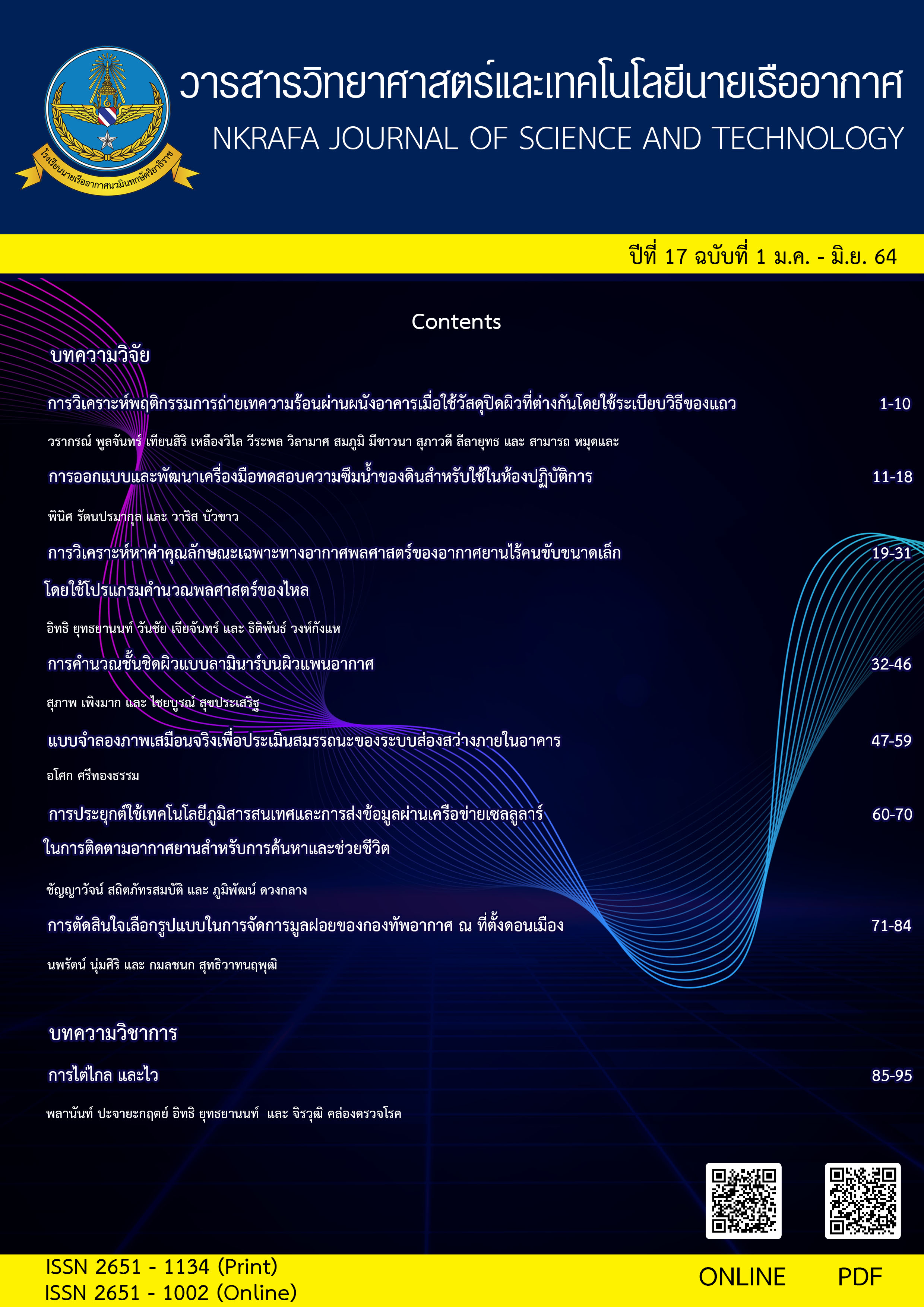Decision Making on Solid Waste Management in the Don Mueang Royal Thai Air Force
Main Article Content
Abstract
This research is to study the decision making of the waste management model in the Don Mueang Royal Thai Air Force. The objectives of the study are to consider factors and select a suitable model for waste management in the Don Mueang Royal Thai Air Force. The first procedure of this research was accumulating factors and theories from literature reviews. Then, the Item-Objective Congruence Index (IOC) was calculated. The index was used to select the factors which had effects on the waste management of the Don Mueang Royal Thai Air Force. The Analytic Hierarchy Process (AHP) was applied to prioritize the factors and select the most suitable waste management model. Three models included the operation of the Royal Thai Air Force, the outsourcing of private sectors and the outsourcing of government organizations. Data were collected via questionnaires from seven experts who work in the Air Force solid waste management. The results revealed that the waste management in compliance with the Royal Thai Air Force environmental strategy, the security for Royal Thai Air Force personnel, and the departments responsible for the waste management are the top three factors which affect the waste management in the Don Mueang Royal Thai Air Force. Additionally, the most suitable model for the waste management in the Don Mueang Royal Thai Air Force is the model operated by the Royal Thai Air Force.
Article Details

This work is licensed under a Creative Commons Attribution-NonCommercial-NoDerivatives 4.0 International License.
- Content and information in articles published in NKRAFA Journal of Science and Technology are comment and responsibility of authors of articles directly. Journal editorial do no need to agree or share any responsibility.
- NKRAFA Journal of Science and Technology Articles holds the copyright of the content, pictures, images etc. which published in it. If any person or agency require to reuse all or some part of articles, the permission must be obtained from the NKRAFA Journal of Science and Technology.
References
[2] Hoornweg, D.T.L., & Laura, T. (1999). What a waste: Solid management in Asia. Working Paper Series No.1. Washington, DC.: World Bank.
[3][4] สุเมธ ไชยประพันธ์ และพิรียุตม์ วรรณพฤกษ์. (2553). การจัดการมูลฝอยเชิงบูรณาการ หลักปฏิบัติและทษฎีพื้นฐาน. สงขลา: ภาควิชาวิศวกรรมโยธา คณะวิศวกรรมศาสตร์ มหาวิทยาลัยสงขลานครินทร์.
[5] วัชรี มนต์ขลัง และคณะ. (2556). การบริหารจัดการขยะมูลฝอยของเทศบาลเมืองนครพนม อำเภอเมือง จังหวัดนครพนม.วารสารสังคมศาสตร์และมนุษย์ศาสตร์. 7(1): 179-185.
[6] ปริวัฒน์ ช่างคิด. (2563). ศักยภาพการจัดการขยะขององค์กรปกครองส่วนท้องถิ่นในจังหวัดระยอง. วารสารการบริหารท้องถิ่น. 13(3): 286-303.
[7] มลิวัลย์ ปานมาตย์ และไพบูลย์ แจ่มพงษ์. (2563). การศึกษาสภาพการดำเนินงานการบริหารจัดการขยะมูลฝอยของ องค์การบริหารส่วนตำบลในจังหวัดนครศรีธรรมราช. ในการประชุมวิชาการและนำเสนอผลงานวิจัยระดับนานาชาติ และนานาชาติครั้งที่ 11(1100-1111). กรุงเทพฯ: มหาวิทยาลัยราชภัฏสวนสุนันทา
[8] Christia, M. & Thomas, G. (2010). Development of Waste Management Practices in Indonesia. European Journal of Scientific Research. 40(2): 199-210.
[9] นภดล ร่มโพธิ์. (2549). Outsourcing ทางเลือกใหม่ขององค์กร. วารสารวิชาการบริหารธุรกิจ. 29(112): 5-7.
[10] Tomas, F., Espino, R. & Victor, P.R. (2004). Outsourcing and its impact on operational objectives and performance: a study of hotels in Canary Islands. Hospitality Management. 23: 287-306
[11] Sameer, K. & Samad, A. (2007). Outsourcing strategies for apparel manufacture: a case study. Journal of Manufacturing Technology Management. 19(1): 73-91.
[12] นภดล ศรีตระกูล ณรงค์, กุลนิเทศ และ สุดาวรรณ สมใจ. (2561). ความยืดหยุ่นของแรงงาน การจัดกำลังคน การลดต้นทุนการจัดการความเสี่ยง ที่มีผลต่อการบริหารจัดการแรงงานภายนอกในการซ่อมแซมยุทโธปกรณ์สายสรรพวุธของกองทัพบก. วารสารวิจัยและพัฒนา มหาวิทยาลัยราชภัฏสวนสุนันทา. 10(1): 73-85.
[13] Saaty, T.L. (1994). How to make a decision. Interfaces. 24(6): 18-43


